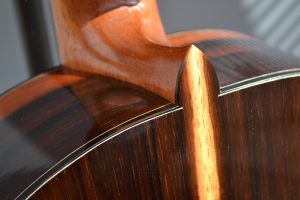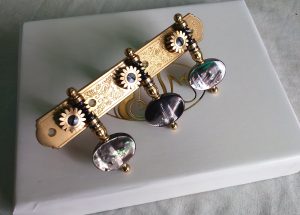The following is a list of frequently asked questions about classical and flamenco guitars. Although many of the answers are not disputed, some are merely my own opinions or preferences! Just click on the question.
- What is the difference between spruce and cedar top guitars?
- How does humidity affect my guitar?
- What is action?
- What is the correct action for a classical guitar?
- What is neck relief?
- Should you change all your strings at once?
- How often should you change your strings?
- Which strings are best?
- What are the advantages of different tension strings?
- What’s the difference between a classical and a flamenco guitar?
- Why does my guitar appear to be out of tune in higher frets?
- How can I get rid of buzzing on some frets?
- What are the advantages/disadvantages of a cut-away?
- What is the standard fretboard width on a classical guitar?
- What’s a double-top guitar?
- What is a lattice-braced guitar?
- What is French polish?
- Why is French polish (shellac) better than lacquer?
- What’s a double-back guitar?
- There is a crack on my guitar, what should I do?
- What makes a concert instrument?
- Is Brazilian rosewood the best tonewood for classical guitars, and what alternatives are there?
- How should I change the strings on my guitar?
- How does a handmade classical guitar differ from a factory guitar?
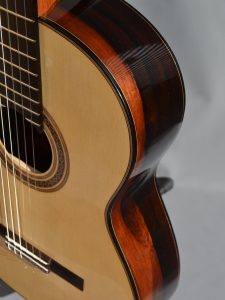
1. What is the difference between spruce and cedar top guitars?
Spruce tends to produce a brighter, more focussed tone with strong trebles and good clarity/separation. Cedar gives a warmer, fuller tone but with less clarity.
It is generally thought that cedar opens up quicker than spruce. Cedar perhaps gives a more traditional “Spanish” sound, and spruce is more suited to Baroque or Renaissance music. Although the choice of tonewood for the top of the guitar does have a significant effect on the tone of the guitar, there are many other factors that are of equal or greater significance. I have heard cedar guitars that sounded like spruce, and vice-versa. I’ve always made mostly spruce-topped guitars, but I’ve also really liked the cedar guitars I’ve made.
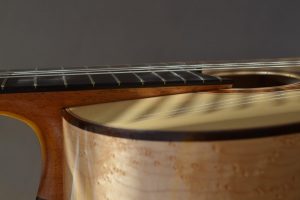
2. How does humidity affect my guitar?
Wood is hygroscopic, that is it absorbs water from the surrounding air. As wood dries, it shrinks (mostly across the grain). Wood used in instrument making is always either air- or kiln-dried before use. However, if a guitar is constructed in conditions of high humidity, then there is a risk of cracking if the guitar is then kept in very dry conditions. Luthiers tend to try to make their guitars at a relative humidity (RH) of about 45%, unless the guitar is destined for somewhere with consistently high RH. There are places where the RH regularly falls below 30% – usually in cold winter climates with heating systems on. In these conditions, almost any instrument may develop cracks, and use of a humidifier is advised. You can get humidifiers for either the room where the guitar is kept, or ones that are kept inside the guitar case.
High humidity levels are less of a problem in terms of damage to the guitar, but can affect the tone and the action of the instrument. If the humidity where you live is frequently above 70%, then it may be worth investing in a de-humidifier. It is always worth investing in a hygrometer so that you know how the RH varies where your guitar is kept. Digital hygrometers can be purchased fairly cheaply from good music stores, and are normally accurate enough for the purpose.
3. What is action?
The action of a guitar is the height of the strings above the fingerboard. The higher the action, the harder the guitar is to play, but if the action is set too low, then the strings will buzz against the frets when played strongly. The correct action will depend to some extent on the player, the guitar, and the strings used. The action is set by adjusting the height of the nut and the saddle.
4. What is the correct action for a classical guitar?
Normally 3mm at the first string (top E) and 4mm at the sixth string (bottom E). These figures can vary up or down slightly depending on the player, but not normally by more than 0.5mm. The action is measured at the 12th fret, from the top of the fret, to the bottom of the string.
Action at the nut is measured by fretting at the third fret, so that the string is stretched between the second fret and the nut. The gap is then checked between the string and the first fret. This should be about 0.25mm for the bass E, 0.2mm for the A and the G strings, 0.1mm (a piece of paper) for the D and B strings and as small a gap as you can get (without it quite touching) for the top E string.

5. What is neck relief?
Opinions vary on how much neck relief classical guitars should have. Neck relief is a slight curvature of the fingerboard (strictly the top surface of the frets) – usually between the nut and the 12th fret. This curvature is designed to allow the action to be set lower at the saddle without the strings (particularly the basses) buzzing. Some builders shape the top surface of the fingerboard/frets slightly concave to achieve this, while others make the fingerboard perfectly flat, and allow the tension of the strings to pull the neck up slightly. My own preference is to build flat, but to put in a very slight relief between the 1st and 4th frets on the bass side only.
From the 4th fret onwards the fingerboard/frets are made perfectly flat, and any further relief is just due to string tension. This adjustment at the first few frets helps to eliminate buzzing on the F and F# on the bass E, which tends to be the place most classical guitars buzz first.
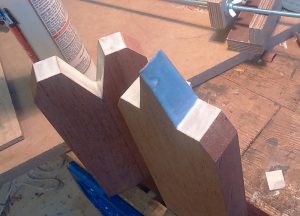
6. Should you change all your strings at once?
Some players believe that removing all the strings at once (and hence all the tension) can in some way damage the guitar, but I’ve yet to come across a luthier who was concerned about this, and I certainly don’t think it is a problem. If you take all the strings off, it allows you to clean the fingerboard, and the top between the soundhole and the bridge. If you change them one at a time, it may save some time in tuning up.
7. How often should you change your strings?
Players tend to change their strings after anywhere between 20 hours and 200 hours playing. 40 to 60 hours would seem reasonable for most players. The bass (wound) strings tend to need changing more frequently. Change the basses when they start to sound dull, and change the trebles if they feel rough where you pluck them.
8. Which strings are best?
This of course comes down to personal preference, and some strings are more suited to certain guitars than others. One of the most popular brands is D’Addario, and I generally recommend either EJ45s or EJ46s for my guitars, as they are very reliable, have good intonation, and give a full, warm tone. Some players prefer carbon treble strings, and many will mix brands,tensions and/or materials. Over recent years many professional players I’ve spoken to use a carbon 3rd string and a nylon 1st string, with some using carbon for the 2nd, and some nylon.
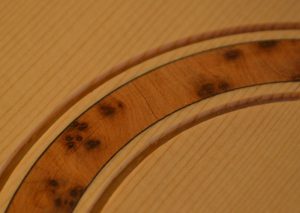
9. What are the advantages of different tension strings?
As with makes of strings, the best tension strings for your guitar will depend both on your own playing style, and on the guitar itself. Hand built guitars are often made to suit a particular tension of strings, and will not work as well if you change the tension.
Generally:
Hard tension strings can give more volume, they tend to buzz less, and may allow for greater dynamic range. They are slightly more difficult to play, particularly for the left hand. Mediums can give more tone colour variation, and are slightly easier on the left hand, but buzz more than the hard tensions. Vibrato is also easier with medium tension strings. Low tension strings are rarely used, but may be well suited to period instruments, or very lightly built guitars. Note that the terms “hard”, “medium” do not refer to specific tensions – so that (for example) one manufacturer’s hard tension strings may be the same as another’s normal tension strings.
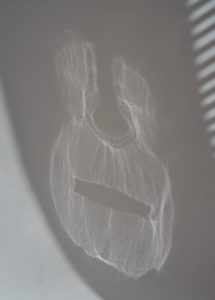
10. What’s the difference between a classical and a flamenco guitar?
Flamenco guitars traditionally have cypress back and sides, and a spruce top, although flamenco negras (rosewood back and sides) are also popular. Flamencos guitars tend to be more lightly built, and the top is thinner than most classicals. The combination of light, thin top, and lower string height (action) give the flamenco guitar it’s characteristic fast, percussive attack, and quick decay (i.e. less sustain). The height of the strings above the top is around 4mm less than on a classical, and the action at the 12th fret can be over 1mm lower. Traditionally, flamenco guitars used friction tuning pegs (similar to violin pegs) rather than machine heads, but many modern falmencos are now fitted with machine heads. Flamenco guitars have tap plates, usually clear, self-adhesive plastic, to protect the top.
11. Why does my guitar appear to be out of tune in higher frets?
There are a number of possible reasons for these intonation errors:
- Defective strings. If a string is not a constant diameter along it’s length, or it’s density varies, then it will not play in tune in all positions. Always use good quality strings, and check for intonation problems when you change them.
- Poor fret placement. This is pretty rare these days, when factory guitars have their frets slots cut by machine, and makers of hand-built instruments (hopefully) take great care over fret placement.
- Incorrect compensation. The position of the saddle needs to be set accurately to allow for the effects of the stiffness inherent in the string, and the stretching of the string caused when the finger presses it down behind the fret. On a classical guitar, the correct compensation is about 2mm further away from the nut than the theoretical correct position, but it varies from string to string. The 3rd (G) string usually has the largest error, as it is the stiffest string. Many classical guitars have a step in the saddle to increase the compensation for the 3rd string, and may makers (myself included) use a slightly different compensation for every string.
- Too high action. If the action is too high, then the string is stretched more when pressed down, requiring increased compensation.
- Changing string type, and/or tension can also change the amount of compensation required, particularly when changing between nylon and carbon strings.
12. How can I get rid of buzzing on some frets?
Buzzing occurs when the string vibrates against the frets further up the fretboard than the fretted note, and is usually due to either too low an action, or poorly levelled frets. If the action is set to 3/4mm (see above for action measurement), and there are still buzzes when the guitar is played with normal strength, then the frets may need levelling. Sometimes back-buzzes occur when the string vibrates against the frets between the fretted note and the nut. This is usually due to the action at the nut being too low, but can also be caused by resonances within the guitar.
13. What are the advantages/disadvantages of a cut-away?
A cut-away allows easier access to higher frets, and is far more common on steel string guitars than classicals. It is extremely difficult to make direct comparisons between cutaway and non-cutaway guitars, as no two guitars (even by the same maker, or from the same factory) are ever exactly the same. There are 2 possible reasons for loss of tone and volume, first the loss of some area of the upper bout, and second, the change in shape, and reduction in volume, of the guitar’s air cavity. Generally, the upper bout plays a much smaller part in tone production than the lower bout. The affect of the change in shape is difficult to predict, but is unlikely to be significant. It is certainly possible to make very good instruments with cutaways, but not many top makers make them (Gary Southwell is one exception). Some of the poor reputation of cutaway guitars may be in part due to the fact that most of them are factory made instruments.
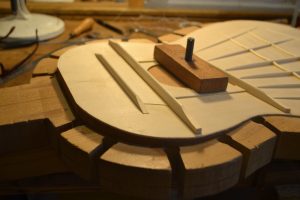
14. What is the standard fretboard width on a classical guitar?
The fretboard (or fingerboard) on a classical guitar is normally around 52mm wide at the nut, and 10mm wider at the 12th fret. The width at the nut varies between about 49mm and 54mm. A narrower width makes it easier to reach across the strings, but makes it more difficult to play cleanly, since the strings are closer together. Builders of hand-made instruments try to match the width of the fingerboard to the particular player.
15. What’s a double-top guitar?
There was some confusion for a while when some makers were referring to double backs as double tops, but double top usually means a top made from two very thin pieces of spruce, or cedar (or one of each), with a layer of lightweight material (usually Nomex) in between, glued together to form a sandwich. This type of construction was first used by Matthias Dammann in Germany. Nomex is a very light but strong honeycomb stuctured material developed for the aviation industry. If you look carefully at the top of a “double-top” you can sometimes see the pattern of the Nomex imprinted into the spruce. A lighter top can potentially be more efficient, and hence produce more volume, but there is also some impact on the tone of the guitar, which is not to everyone’s taste.
16. What is a lattice-braced guitar?
The lattice-braced guitar was developed in the 1980s by Australian luthier Greg Smallman. His guitars are renowned for producing significantly more volume than traditionally built classical guitars. In fact it is not the bracing pattern that gives Smallman guitars their volume, but more the extremely thin, lightweight soundboards combined with the very thick and heavy back and sides. The lattice bracing was merely the best way to support such a thin soundboard. As with double-top guitars, there is a difference in tone when compared to traditional guitars, with some players describing the sound as nasal. My own analysis of Smallman guitars shows that they have a significantly different frequency response compared to typical fan-braced guitars.
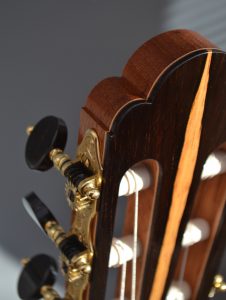
17. What is French polish?
French polishing is actually a method, rather than a type of polish. The material itself is shellac, which comes from the secretions of the female lac beetle, which are harvested from the bark of trees, and processed to produce flakes of an orange/brown colour. These flakes are then dissolved in alcohol to produce the liquid polish. The method of French polishing involves applying the shellac using a rubber – a wad of cotton wrapped in a clean, cotton cloth. The rubber is soaked in the shellac solution, and then squeezed out so that the rubber is just damp to the touch. The finish is then applied to the wood using the rubber, in a variety of motions – circular, figures-of-eight and straight lines. The process is very slow, the finish being obtained by very many applications of very small amounts of shellac. Each coat needs to be thoroughly dry before the next coat is applied, and the number of coats may be anywhere between 10 and 50, depending on how much shellac is applied with each coat.
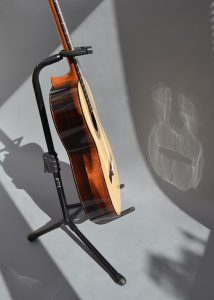
18. Why is French polish (shellac) better than lacquer?
Shellac gives a very beautiful finish when applied well. Although it is a time consuming process, it is well worth the effort. The finish brings out the natural beauty of the wood, whereas lacquers can have the appearance of a thick layer of shiny plastic!
More importantly, because the finish is extremely thin, it does not inhibit the vibration of the soundboard, which a heavily applied lacquer can. Although lacquers are generally far more robust than shellac, they are very difficult to repair if damaged. Once the skill of French polishing is acquired, it is relatively straightforward to repair, or touch up the finish. From the luthier’s point of view, a further advantage of French polishing is the non-toxic nature of the materials used.
19. What’s a double-back guitar?
A double back guitar has a second back, mounted inside the guitar body. The second back is normally made of softwood, and is in some ways like a second top (hence the confusion of names). The idea is that this second back vibrates in sympathy with the top, possibly improving projection. As this second back is not in contact with the player, it’s vibrations are not damped by the player’s body (which the real back is).
20. There is a crack on my guitar, what should I do?
Crack repairs are really best left to luthiers, preferably someone experienced in repairs (not all luthiers are). A poorly repaired crack will detract from the appearance of the guitar, and may open up again. Sometimes, if the crack is not too bad, there is no effect on the tone or playability of the guitar, in which case an acceptable option is to leave it. It is worth trying to determine what caused the crack. The most common cause is low humidity. When the wood dries out, it shrinks (mostly across the grain), causing stresses in the wood which can lead to cracks. Check the relative humidity (RH) where the guitar is kept, and if it is much below 40%, it may be worth investing in a humidifier. An early symptom of low humidity is shrinkage of the ebony fingerboard, which leaves the sharp ends of the frets protruding.
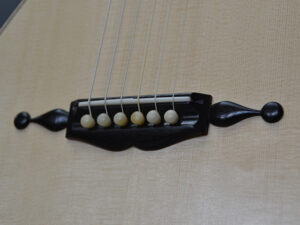
21. What makes a concert instrument?
There is no precise definition of what constitutes a concert guitar. When a classical guitar is described as a concert instrument, it is usually intended to indicate that the guitar is suitable for professional performance. However, many instruments sold as concert guitars would not be up to the standards required by professional musicians. Conversely, many top makers do not use the term concert guitar at all, but their guitars are easily up to professional standards.
Some guitar makers offer standard and concert models, and perhaps spend more on the materials for the concert guitar, but this does not necessarily make it a better instrument.
22. Is Brazilian (Rio) rosewood the best tonewood for classical guitars, and what alternatives are there?
There is no absolute answer to this. For some years many players and makers have believed that the very best classical guitars are made with Brazilian rosewood (Dalbergia nigra). In truth, the tonewood used for the back and sides of the guitar has a much smaller effect on tone than either the wood used for the top, or how that top is thicknessed and strutted. The back and sides do however have a subtle effect on the tone colour of the instrument, and can affect projection. This does not mean that any one wood is better than any other, just that they give slightly different results. The big problem these days with Rio rosewood is availability – it has been listed in CITES Appendix 1 since 1992, i.e. the species is threatened with extinction, and as such it may not be traded internationally for commercial purposes. This makes it both difficult and expensive to obtain, and also imposes restrictions on the subsequent movement of any instruments that were made using Brazilian rosewood. There are, however, a great many alternative tonewoods which, whilst not a direct replacement, will make excellent instruments. I have used walnut, maple, cypress, ziricote, a variety of rosewoods, macassar ebony, satinwood and doubtless some others I’ve forgotten, and all can be used to make great guitars. Ultimately, it is more a question of personal preference than of any one tonewood being better than any other.
24. How does a handmade classical guitar differ from a factory guitar?
Handmade classical guitars are usually (but not always) built by individual luthiers. There is no real agreement as to what is meant by “handmade”, and the term is often abused by manufacturers, who use the term to describe what are essentially factory instruments. It is also true that these days most individual luthiers use machine tools to some extent. The real difference between a factory guitar and a truly handmade guitar is that the luthier(s) are treating each instrument as unique, and will make slight alterations to their basic design to get the best from the particular tonewoods, or to suit a particular customer’s requirements.
